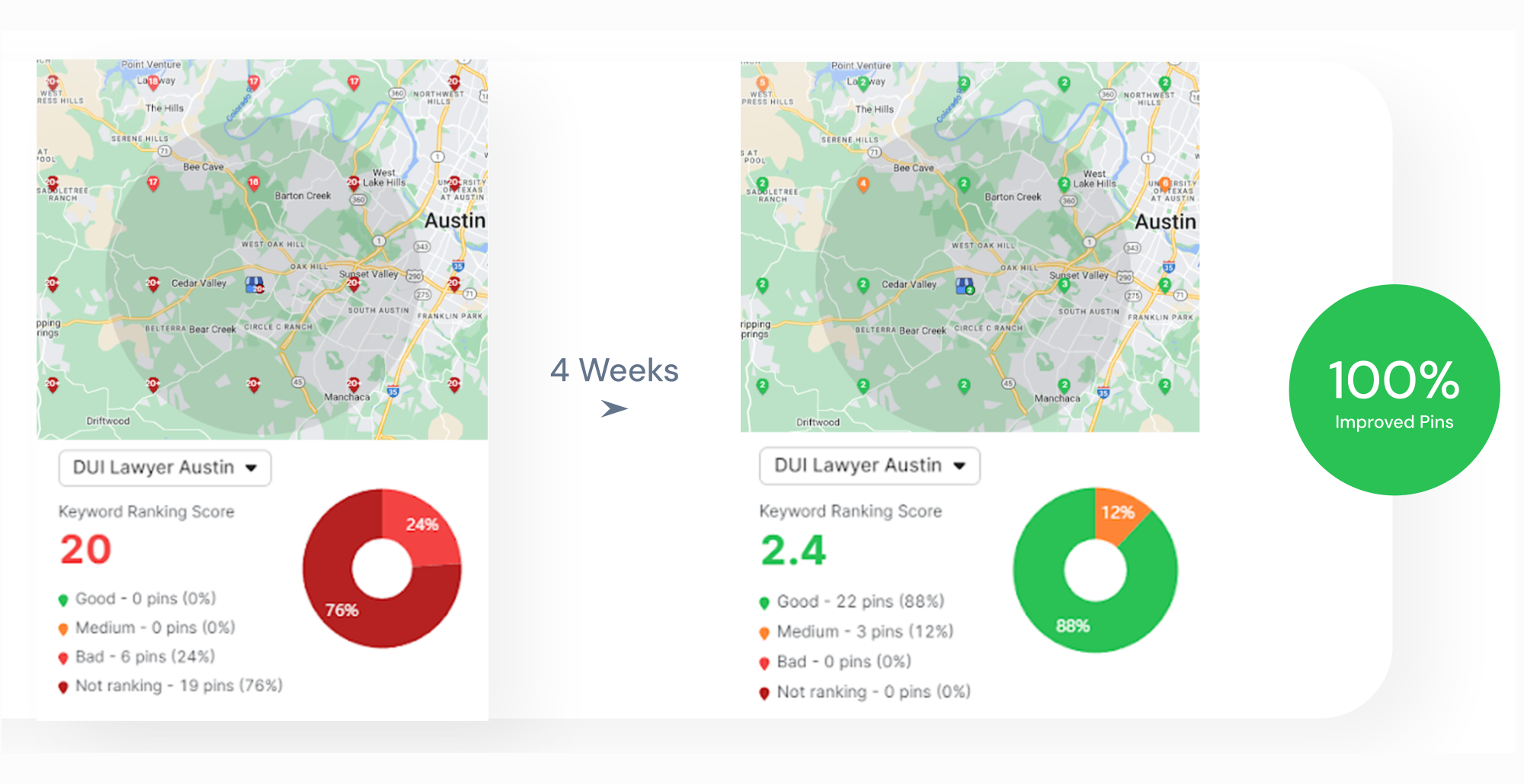Crafting an SEO-Friendly Conclusion: Strategies for Success
The conclusion of a blog post is not merely a terminal point; rather, it serves as a strategic component that can significantly impact a webpage’s SEO performance.
A thoughtfully crafted conclusion reinforces the central message, seamlessly integrates target keywords, and encourages visitors to linger, delve deeper, or take action — all of which are vital for bolstering search engine rankings.
Maintaining the balance between delivering value to the reader and satisfying search engine algorithms is the key to unlocking the potential of a powerful SEO conclusion.
In this article, readers will discover methods for writing conclusions that not only resonate with their audience but also underpin a robust SEO strategy.
Key Takeaways
- A Well-Crafted Conclusion Reinforces the Core Message and Strategically Incorporates Keywords, Improving SEO and User Engagement
- Effective Calls to Action in the Conclusion Can Guide Users Toward Further Interaction With the Site, Boosting Conversion Rates
- Regularly Updating Conclusions With the Latest Information and SEO Best Practices Ensures Ongoing Relevance in Search Engine Results
- Readability and Accessibility Across Devices Are Essential for a Conclusion to Maintain User Interest and Extend Content Interaction
- Utilizing Analytics to Track the Performance of Content Conclusions Helps Refine SEO Strategies to Achieve Better Engagement and Ranking
Understanding the Role of a Conclusion in SEO

The conclusion of a blog post holds significant weight in the realm of SEO, acting not only as the final touchpoint for visitors but also as an essential component for search engine algorithms.
A skillfully crafted conclusion can reinforce the message, encourage reader engagement, and cement the document’s value in the minds of the audience.
It offers a strategic opportunity to recap the core message, amplify the relevance of content through keyword integration, and persuade visitors to take the desired action or explore related content.
To that end, crafting an SEO-friendly conclusion involves a balance of reinforcing the article’s core message, leveraging strategic keywords, and providing clear value that resonates beyond the last sentence.
Initiating the Final Impression for Readers and Search Engines
An adeptly composed conclusion serves as the nexus where user experience and search engine optimization intersect; it’s the last opportunity to leave a profound impact on both the visitor and the search engine. Through a compelling closure, a well-rounded SEO strategy finds its completion, embedding the web page firmly within the relevant search space.
By understanding the gravity attached to this segment of the blog post, website owners are tasked with conveying the core message succinctly, prompting the audience to solidify their comprehension and enticing search engines with pertinent cues:
- Reiterate the primary thesis of the content to remind readers of the value proposition.
- Integrate target keywords seamlessly to maintain the SEO thread until the final punctuation.
- End with a clear, actionable takeaway that encourages further interaction with the site.
Enhancing Content Value With a Strong Closure
Effective conclusions solidify a blog post’s value by providing a succinct summary and evoking a sense of completeness. An SEO-friendly closure not only ties together the various threads presented throughout the text but also elevates the overall document by encouraging search engines to view the page as a cohesive source of information. The art of finalizing content benefits from a harmonious blend that respects the user’s time while highlighting the web page’s significance.
Meticulously structured conclusions exhibit a deep understanding of the audience’s needs and search engine criteria. By affirming the key points and seamlessly weaving in the strategic keywords identified through meticulous keyword research, a closure reinforces the article’s relevance to the corresponding search query, thus enhancing its potential to rank favorably on the search engine result pages. This deliberate approach extends the content’s reach, driving both reader satisfaction and search engine recognition.
Integrating Keywords to Maintain SEO Relevance
In the delineation of an SEO-friendly conclusion, strategic keyword integration plays a pivotal role. This finesse involves the deft incorporation of search terms, aligned with user intent and the overarching SEO content strategy. These keywords, selected through a diligent keyword research process, bolster the content’s visibility and relevance in the landscape of Google search results, propelling it toward a more authoritative positioning.
Effectual keyword placement in the conclusion stresses the importance of a seamless blend with the surrounding text to avoid disrupting the reader’s journey. Careful attention to keyword density and placement amplifies the document’s resonance with targeted search queries, thereby optimizing the blog post’s potential to secure a coveted spot in SERPs without compromising on readability and user experience. This meticulous attention ensures that the web page communicates its subject matter with clarity, catering to both search engines and the target audience.
Elements of a Powerful SEO Conclusion

The art of concluding a blog post transcends mere summary, embodying a strategic blend of reaffirmation, engagement, and foresight.
Crafting an SEO-friendly conclusion not only demands the restatement of main points with precision but also the cultivation of reader interaction through well-placed calls-to-action.
Moreover, it entails providing readers with a glimpse into future discussions or implications, thereby extending the life and relevance of the content.
This section will navigate through these essential components, detailing how each facet contributes to elevating a blog post into a complete, coherent narrative that aligns with both search engine optimization best practices and user experience refinement.
Restating Your Main Points Succinctly
A conclusion with impact is akin to a chef’s perfect garnish, completing the experience of the meal. It revisits the blog post’s chief arguments with finesome precision, ensuring the reader leaves with a clear and concise understanding of the content’s message. This restatement is not merely a repetition; instead, it’s an apt consolidation of the text’s core arguments, beautifully tailored to refresh the reader’s memory and solidify the post’s purpose.
Expertly distilling the essence of the entire document, a well-crafted conclusion mirrors the introduction’s hook and brings the journey full circle. The writer must employ tact and brevity, encapsulating the post’s key points in a way that is both memorable and striking. This strategic recap provides a framework that cements the content’s value, preparing the reader to exit the page with all crucial takeaways top of mind.
Encouraging Reader Engagement Through Calls-to-Action
Stimulating reader engagement at the close of an SEO-focused blog post is as vital as the introduction. With the strategic use of calls-to-action (CTAs), writers can transform passive readers into active participants, thereby increasing the conversion rates and fostering a deeper connection with the audience.
A conclusion is more than a signpost indicating the end of a narrative; it’s an invitation to continue the journey. By suggesting further reading, inviting comments or questions, or guiding visitors towards a landing page or contact form, a blog post extends its reach, actively shaping the visitor’s experience and bolstering the likelihood of them taking the next step:
- Direct the reader to related articles or blog posts to extend their engagement with the brand.
- Pose a thought-provoking question to inspire comments and discussions, further enveloping readers in the content’s sphere.
- Offer a free guide or e-book as an incentive for subscribing to newsletters or services, enhancing lead capture strategies.
Wrapping Up With a Future Outlook
In the dance of summing up an SEO article, casting a gaze towards the horizon invites readers to ponder on future implications and evolving trends in the sphere of search engine optimization. This forward-looking perspective not only imbues the content with lasting relevance but also positions the company as a thought leader, attuned to the dynamic nature of SEO.
A conclusion that teases upcoming discussions or potential updates can act as a springboard, propelling the audience’s curiosity and ensuring a blog post’s influence extends past its immediate scope. It’s an artful way of securing the readers’ interest in a company’s future content offerings, fostering continued engagement with the brand’s digital marketing strategy.
Using Target Keywords Effectively in Your Conclusion

An effective conclusion in search engine optimization is more than a mere compilation of final thoughts; it serves as the definitive seal that can enhance the document’s relevance in search results.
In deploying keywords within this critical segment, precision is paramount.
A conclusion must showcase a balance between keyword density and the natural flow of language to avoid the pitfall of keyword stuffing.
This involves the strategic placement of keywords to maximize impact and alignment with user intent, ensuring that the content resonates with both the target audience and the search engine algorithms.
For writers, this is a sophisticated exercise in subtlety and tact that underscores the value of the web page and invites continued exploration of the site’s offerings.
Balancing Keyword Density Without Keyword Stuffing
Navigating the delicate balance between keyword density and avoiding the detraction of keyword stuffing demands a nuanced approach. A conclusion that integrates keywords judiciously serves as a signal to search engines, enhancing the document’s relevance:
| Aspect | Importance | Strategy |
|---|---|---|
| Keyword Density | Communicates topic relevance to search engines | Use keywords naturally within the flow of the conclusion |
| Avoiding Keyword Stuffing | Ensures readability and user experience | Focus on semantic relevance and thematic consistency |
The skilled SEO content writer weaves target keywords into the fabric of the conclusion with linguistic precision, ensuring each term aligns organically with the text’s message and audience intent. This approach fosters a conclusion that resonates with both readers and search engine algorithms, bolstering the page’s SEO performance without compromising the user’s reading experience.
Strategically Placing Keywords for Optimal Impact
The culmination of an SEO-optimized blog post is exemplified by the strategic placement of keywords in the conclusion. A conclusion should not only reinforce the content’s essence but also integrate keywords in a way that they resonate with the document’s narrative and the user’s search intent, elevating the post’s visibility in search engine results while maintaining the natural cadence of the text.
Website owners and content creators understand that impactful keyword placement in the final paragraphs requires a delicate balance; it is the finishing stroke that can leverage the search engine’s algorithms to favor the blog post in rankings. Success is achieved when keywords are embedded in the conclusion so adeptly that they enhance the web page’s relevance without appearing forced or out of context, thus optimizing the content’s reach to the target audience and maintaining a seamless user experience.
Aligning Keywords With User Intent
In the orchestration of a conclusion that is both impactful and search-engine optimized, aligning keywords with user intent is paramount. The strategic inclusion of keywords must reflect the natural inquiries and requirements of the target audience, ensuring that the content not only appeals to visitors but also garners favor with search engine algorithms through relevance and precision.
Content creators focus on weaving keywords into the narrative in a way that not only emphasizes the subject matter but also anticipates the users’ next steps. This alignment enriches the SEO-driven conclusion, transforming it from a mere summary into a resonant echo of the audience’s search behavior, thereby enhancing the document’s ability to rank well in search engine result pages (SERPs).
Integrating Calls to Action That Work

An indispensable element in sculpting a conclusion tailored for search engine optimization extends beyond summarizing thoughts—it encompasses the decisive activation of reader response.
A shrewdly integrated call to action (CTA) serves as the pivotal bridge between content consumption and user engagement, fostering a seamless transition from interest to action.
In the context of matching CTAs to various stages of the user journey, formulating compelling prompts, and scrutinizing their performance, content creators unearth opportunities to amplify conversions and refine their SEO strategy.
It’s within these strategies that the power of a conclusion transcends its traditional role, evolving into a dynamic catalyst for business growth and audience connection.
Matching the CTA With User Journey Stages
Aligning calls to action with the various stages of the user journey is a nuanced strategy essential for guiding the audience towards a desired outcome. The strategic placement of a CTA in the conclusion must resonate with where the reader currently stands in their engagement with the website—whether they’re newcomers requiring more information, or loyal followers ready to make a decision.
Advancing the effectiveness of a conclusion with a powerful call to action is an exercise in psychological insight and user experience design. Precision in matching the CTA with the reader’s phase in the conversion funnel ensures relevance, encouraging the desired action—be it newsletter sign-ups for nurturing potential leads or providing direct links to products for poised buyers.
Crafting Unique and Persuasive CTAs
The potency of a call to action (CTA) transcends mere instruction; it thrives on its unique ability to capture the interest of the reader and galvanize them into action. Website owners and SEO specialists craft CTAs that are as distinctive as they are compelling, offering clear directives that resonate deeply with the reader’s aspirations, curiosities, or needs.
Herein lies the artful balance between commanding attention and providing value: a persuasive CTA weaves a narrative that feels both individualized and authentic. Writers must craft a call that not only stands out but also aligns seamlessly with the document’s focus and the audience’s intent:
- Create urgency or invoke curiosity to elicit immediate response.
- Use language that speaks directly to the reader, fostering a sense of personal engagement.
- Ensure the call aligns with the reader’s expectations and the article’s value proposition.
Tracking CTA Performance for Future Improvements
Tracking the performance of calls to action (CTAs) is a critical step toward refining SEO strategies and elevating user engagement. By analyzing metrics such as click-through rates (CTR) and conversion rates, content creators can gain insights into which CTAs resonate with their audience and drive desired outcomes:
| Metric | Role in CTA Analysis | Impact on SEO |
|---|---|---|
| Click-Through Rate (CTR) | Gauges the effectiveness of CTA messaging | Directs improvement strategies for CTA placement and phrasing |
| Conversion Rate | Measures the success of CTA in achieving set goals | Provides insights for optimizing content to foster user action |
Utilizing analytical tools to dissect the data, website owners can pinpoint the strengths and weaknesses of their CTAs. Such assessments guide subsequent iterations of content, ensuring each conclusion fortifies the site’s SEO performance and enhances the visitor’s journey toward conversion.
Writing Conclusions That Boost Page Stickiness

The conclusion of a blog post is a critical juncture that can significantly sway the visitor’s experience, influencing how long they stay engaged with the content and the likelihood of them exploring further within the site.
A thoughtfully composed conclusion acts as a strategic anchor, tying together insights and offering final reflections that resonate.
By skillfully encouraging prolonged engagement with high-quality content, reducing bounce rates through insightful summations, and deploying interactive features to maintain interaction, content creators can greatly enhance the ‘stickiness’ of a web page.
These tactics are not merely aimed at ending a discussion but serve to foster a more profound and lasting relationship between the user and the content presented.
Encouraging Prolonged Engagement With Quality Content
In the tapestry of digital content, a conclusion that captures and sustains visitor interest is integral to reducing bounce rates and increasing time spent on the page. A writer’s mastery becomes evident when their final words entice readers to explore related topics, enticing them to remain within the comforting embrace of the website longer than anticipated.
Penning a conclusion that resonates with the discerning digital audience demands an artful touch; it should not only encapsulate the essence of the blog post but also weave together the narrative threads in such a way that readers feel compelled to delve deeper into the site’s offerings, enhancing their user experience and underpinning the web page’s stickiness.
Reducing Bounce Rates Through Relevant Wrap-Ups
Conclusions play a pivotal role in mitigating bounce rates by providing visitors with a compelling reason to continue interacting with a website. By strategically summarizing the article’s key points and demonstrating their relevance to the reader’s interests, a conclusion can serve as a subtle yet effective gateway to additional content, thereby reducing the likelihood of swift exits.
Expertly crafted wrap-ups act as a linchpin to reader retention, emphasizing the connectedness of the presented information and encouraging further exploration. With a conclusion that succinctly underscores the content’s applicability to the user’s needs, website owners can witness a significant decrease in bounce rates as readers are enticed to continue their journey through the site:
| Strategy | Effect | Role in Reducing Bounce Rates |
|---|---|---|
| Summarizing Key Points | Encourages retention of article’s message | Acts as a content connector, steering users to further reading |
| Demonstrating Relevance | Highlights the value of content for the reader | Sustains user engagement by showing the pertinence to their search |
Implementing Interactive Elements for Increased Interaction
Engaging the visitor with interactive elements in the conclusion of a blog post can significantly elevate the level of interaction. Polls, quizzes, or interactive graphics invite the user to actively participate, transforming the static act of reading into an engaging experience.
This interactive engagement paves the way for a deeper connection between the visitor and the content, extending the session duration and fostering a lasting impression of the brand. The implementation of these elements cater to different user preferences and learning styles, enhancing the user experience and the effectiveness of the SEO strategy:
- Interactive polls offer a quick and inviting way for visitors to share their opinions.
- Quizzes stimulate the reader’s curiosity and can lead to increased page views as users explore results.
- Infographics that respond to user input not only impart information but also entertain, increasing page stickiness.
How to Measure the Success of Your SEO Conclusion

The vitality of a conclusion in the sphere of SEO is measurable, lending tangibility to its efficacy in engaging the user and bolstering the strength of the overall SEO campaign.
Company strategists and webmasters employ a myriad of analytical tools to discern the nuanced effects a conclusion has on user behavior, its influence on conversion rates, and the outcomes from varying strategic approaches.
The forthcoming text elucidates the methodologies employed to quantify the performance of SEO conclusions—ranging from analytics tracking user interaction to examining conversion funnels, as well as deploying methodical a/B tests to refine the concluding elements of the content.
This critical analysis aids in honing content to better serve users and achieve the overarching goals of the SEO strategy.
Using Analytics to Track User Behavior
In the intricate web of SEO content crafting, analytics stand as the compass for gauging user behavior within the digital realm. Utilizing these tools, strategists can observe how visitors interact with content, pinpointing where users engage most and where they may disengage.
Accurate analysis of this data allows content creators to adjust their strategies, enhancing the effectiveness of conclusions to resonate with the user’s journey. The effectiveness of a conclusion is discerned through metrics such as bounce rates and session durations:
- Review bounce rates to assess if readers are compelled to stay on the page after reading the conclusion.
- Examine session duration metrics to determine the effectiveness of the conclusion in retaining user attention.
Assessing Conversion Rates Related to the Conclusion
Conversion rates stand as a linchpin in evaluating the potency of SEO conclusions. By examining the number of visitors who take a desired action after reading a blog post’s conclusion, website owners can effectively measure the impact of their closing statements on the bottom line.
Analyzing conversion data directly linked to the effort of crafting a compelling conclusion illuminates its role in guiding user behavior. The following table outlines key metrics that paint a comprehensive picture of an SEO conclusion’s performance:
| SEO Conclusion Element | Metric for Measurement | Impact on Conversion |
|---|---|---|
| CTA (Call to Action) Effectiveness | Conversion Rate from CTA | Directly correlates to the action incited by the conclusion |
| Keyword Relevance | Engagement Metrics post-Conclusion | Reflects the conclusion’s SEO strength in retaining interest |
Assessing this data enables website owners to refine their conclusions, optimizing them to foster higher engagement and increased conversions.
Conducting a/B Testing on Different Conclusion Strategies
Conducting A/B testing on different conclusion strategies enables SEO specialists to distill which elements resonate best with their audience. By presenting two variant endings to a segment of users, companies can infer which conclusion drives better SEO performance, such as higher engagement or lower bounce rates.
This methodical approach entails creating variations of the concluding section of content, each with slight modifications, whether it be in the call to action, keyword usage, or the overall tone. Real-time feedback from these controlled experiments guides content creators in shaping conclusions that maximize user retention and contribute to the broader objectives of their SEO campaign.
Tips for Maintaining Readability in Your Conclusion

Success in search engine optimization hinges not just on strategic keyword placement or sophisticated technical tactics, but also on the vital element of readability, especially in the final paragraphs that form a blog post’s conclusion.
Readability is the beacon that guides readers through the sea of text, ensuring that the conclusion is both coherent and effectively communicates its message.
More than a recap, a conclusion crafted with readability in mind anchors the entire piece, providing clear and comprehendible content that is approachable for a diverse audience.
It must shine across various platforms and devices, addressing the nuances of digital consumption.
The following discussion will delve into methods for structuring sentences that foster clarity and flow, applying language that remains user-friendly for all demographics, and optimizing the conclusion’s accessibility to guarantee a consistent experience for users on different devices.
Structuring Sentences for Clarity and Flow
Crisp, coherent sentence structures are pivotal in crafting an SEO-friendly conclusion that provides clarity and maintains a compelling flow. SEO specialists and writers alike prioritize the rhythm of prose, ensuring each sentence builds upon the last, guiding readers to a satisfactory end that reinforces the article’s objective while maintaining concise and digestible information.
Optimizing sentence construction not only improves the readability of SEO content, but also enables a smoother user experience that aligns with the expectations of both the audience and search engine crawlers. The effectiveness of a conclusion often hinges on this intentional design that subtly supports user comprehension and encourages further site engagement.
Applying User-Friendly Language Across Demographics
Masterful content creators understand that a conclusion’s potency lies in its ability to communicate effectively with a broad audience. Therefore, implementing user-friendly language is essential, enabling the conclusion to resonate with readers from diverse backgrounds and varying levels of expertise.
Clear, accessible language bridges the gap between complex concepts and practical understanding, ensuring that a conclusion transcends demographic boundaries. This approach enhances the conclusion’s reception and amplifies the potential for the expansive reach of the content within search engine results.
Emphasizing the Conclusion’s Accessibility on Various Devices
Ensuring the accessibility of a conclusion on various devices is a cornerstone in achieving a truly SEO-friendly experience. In today’s multi-device landscape, writers and SEO practitioners must guarantee that conclusions translate effectively across desktop monitors, tablets, and smartphones, maintaining their integrity and impact regardless of screen size or operating system.
Content creators focus meticulously on responsive design and adaptable formatting to keep conclusions clear and engaging. This attentiveness to device variation safeguards the reader’s seamless transition from the bulk of the article to its final thoughts, bolstering the likelihood of content retention and continued site interaction.
Refreshing Your Conclusion for Higher SEO Value

In the dynamic landscape of SEO, the power of a thoughtfully constructed conclusion extends beyond concluding thoughts—it can significantly influence the content’s longevity and search engine prominence.
Refreshing your conclusions periodically ensures they maintain their luster in the fast-paced world of digital marketing.
This process involves a deliberate re-examination of existing content to infuse it with updated information, reflecting the latest trends and data.
As search engine algorithms continue to evolve, re-optimizing your conclusions becomes a crucial practice to sustain—and even enhance—your article’s traction and relevance in search engine results.
Periodically Reviewing and Updating Your Conclusions
A dynamic digital environment necessitates the continuous review and refreshment of SEO conclusions. This meticulous process, essential for maintaining a competitive edge, involves revisiting and revising content to ensure alignment with the latest SEO best practices and market trends.
| Activity | Purpose | Outcome |
|---|---|---|
| Reviewing Current SEO Trends | To align conclusions with evolving search engine algorithms | Updated content that continues to rank effectively |
| Refreshing Information | To incorporate the latest industry insights and data | Enhanced relevance and value for the target audience |
By regularly assessing the conclusions of SEO content, organizations ensure they reflect current knowledge and user intent. Such updates are not merely cosmetic; they directly influence a document’s currency and authority, factors that search engines consider when determining rankings.
Incorporating Updated Information for Continued Relevance
Incorporating updated information into conclusions is pivotal for maintaining relevance in an ever-changing digital landscape. It entails a strategic reassessment of content, ensuring the incorporation of the most current insights and factual data relevant to the topic at hand. This dynamic updating process keeps the content fresh and valuable, meeting the evolving needs of both users and search algorithms.
| SEO Element | Review Frequency | Impact on SEO | Benefit to Audience |
|---|---|---|---|
| Conclusion Relevance | Quarterly or with major industry changes | Ensures alignment with search algorithm updates | Delivers timely and accurate information |
Search Atlas, with its comprehensive suite of SEO tools, empowers users to stay at the forefront of their digital marketing campaigns. Website owners can utilize Site Explorer and Backlink Analyzer to identify shifts in domain authority and backlink profiles, respectively, incorporating these insights into their conclusions to bolster search engine rankings and ensure ongoing audience engagement.
Re-Optimizing Your Conclusions as Search Algorithms Evolve
As search algorithms advance in complexity, a static SEO strategy may lead to obsolescence: Content creators face the challenge of consistently tailoring their conclusions to align with these evolving parameters. The nuances of algorithm updates dictate an ongoing process of conclusion re-optimization, ensuring that each piece concludes with elements that search engines currently favor for ranking.
| SEO Aspect | Reason for Updating | Expected Improvement |
|---|---|---|
| Conclusion Keywords | Align with current algorithmic preferences | Enhanced SERP positioning |
| CTA Relevance | Match with updated user intent | Improved user engagement and conversions |
The continual recalibration of SEO strategies, especially within the conclusion, empowers content to maintain its search engine visibility and topical authority. Proactive adjustments to keyword emphasis and CTA placement reflect the latest SEO innovations, supporting sustainable online presence and audience value over time.
Frequently Asked Questions
Why is it important to include a conclusion in seo content?
Including a conclusion in SEO content is paramount for succinctly summarizing key points and reinforcing the desired call to action, guiding the reader toward the intended next steps. This section not only encapsulates the essence for visitors but also serves as a signal to search engine crawlers, emphasizing the article’s main topics and potentially aiding in search engine rankings.
How can i effectively incorporate target keywords into my seo conclusion?
Effectively incorporating target keywords into an SEO conclusion requires attentiveness to both relevance and subtlety; ensuring that the concluding section reaffirms the primary keywords gracefully and contextually aligns with the article’s overarching message. Maintaining this balance not only reinforces the central themes for search engines but also consolidates the value proposition for the reader, thereby enhancing both search engine visibility and user experience.
What are some strategies for writing powerful calls to action in a conclusion?
Crafting compelling calls to action in a conclusion hinges primarily on understanding and addressing the audience’s motivations, ensuring that the message communicated is both clear and direct in its intent. One should employ strong, action-oriented verbs, along with a sense of urgency or benefit that resonates, prompting the visitor to take the desired next step.
How can a well-crafted conclusion help improve page stickiness?
A well-crafted conclusion serves as the pivotal moment to summarize the value of the content, compelling the visitor to linger and consider the next action, thus enhancing page stickiness. By providing clear takeaways or calls to action, it ensures visitors leave with a lasting impression, potentially reducing bounce rates and increasing time spent on the web page.
What are some key metrics to consider when measuring the success of an seo conclusion?
When assessing the triumph of an SEO campaign, key metrics to focus on include search engine ranking improvements, organic traffic growth, and enhanced user engagement rates. Furthermore, a rise in conversion rates and the quality and quantity of backlinks are pivotal indicators of success.
Conclusion
Crafting an SEO-friendly conclusion is a crucial element for ensuring the success of a blog post. It’s the final chance to make an impression on both the reader and search engines. A well-executed conclusion should neatly tie together the main points of the content, encourage reader interaction through clear calls-to-action, and harness the power of strategic keyword use to boost search rankings.
Periodic review and updating of conclusion strategies are essential to align with evolving SEO practices and user interests, maintaining content relevance and fostering engagement. When done right, a powerful conclusion enhances a site’s stickiness, improves conversion rates, and solidifies the content’s SEO value, providing a potent tool in the digital marketer’s arsenal for achieving lasting success.
Whether you’re optimizing the title tag for maximum visibility in Google search results or strategically placing keywords within the conclusion paragraph, every element contributes to creating a search engine-friendly website. SEO content writing should focus not only on the product or service but also on addressing customer needs. By crafting content that is both customer-centric and search engine friendly, you can create a compelling digital presence that resonates with your target audience.
Keep in mind the character limit for title tags, ensuring they are concise yet impactful. Each paragraph should serve as a valuable piece of the puzzle, contributing to the overall SEO strategy. As the digital landscape evolves, staying updated on SEO best practices is essential for maintaining a search engine-friendly website.
The art of crafting an SEO-friendly conclusion goes beyond the surface, delving into the intricacies of title tags, character limits, and customer-centric content. By consistently optimizing these elements, you not only enhance your site’s visibility in Google search results but also create a lasting impact on your audience, driving engagement and conversions.











